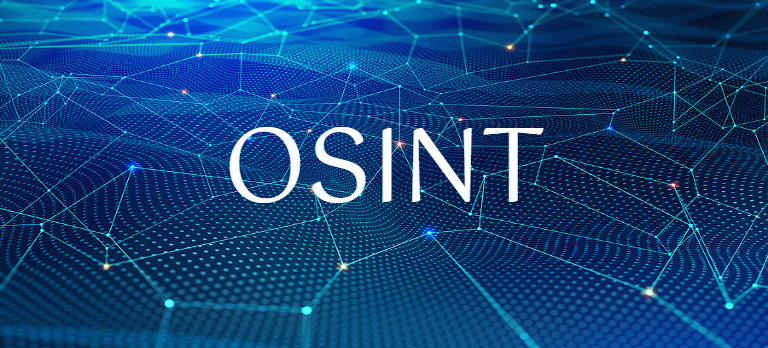While there is still much to learn and understand about how cryptocurrency should play a role in global commerce and personal finances, the technology behind it – distributed ledger technology (DLT) or blockchain – is much better understood. Blockchain is a secure way of recording transactions and tracking assets or information using a decentralized network rather than a central repository. By recording each transaction in a digital ledger, one that cannot be changed by any party, the chain of custody is completely transparent and immutable. While digital currencies were the first application of blockchain to flourish, the potential for this technology to fundamentally change the way we conduct business is far greater. Learning from the early application of blockchain to currency, the government has begun to investigate the best ways to regulate and manage blockchain use to ensure that the positive aspects of transparency, visibility, and control outweigh the risks.
In March 2022, the Biden administration released the Executive Order on Ensuring Responsible Development of Digital Assets. One aim of this order was to get agencies across government to research and report on the risks and benefits of creating a central bank digital currency system. The EO also asked agencies and departments, including the Office of Science and Technology, Treasury, Commerce, Justice, and more, to look at six priorities:
- consumer and investor protection
- financial stability
- illicit finance
- U.S. global competitiveness
- inclusion
- responsible innovation
In September 2022, the Administration followed up with the Comprehensive Framework for Responsible Development of Digital Assets. This guidance was welcomed by the blockchain industry as it showed a commitment to the whole-of-government approach needed to ensure the positive use of blockchain overcomes the potential pitfalls of the technology.
We talked to some blockchain and crypto experts to get their perspective on the good, bad, and the potential for blockchain in government and our society.
Bad News First: Blockchain Innovation Happening Through Dark Web
As with any new technology, bad actors have become early adopters of cryptocurrency. Gurvais Grigg, Global Public Sector CTO for Chainalysis pointed out that when cars first came out, thieves realized they could commit a crime in one state and then quickly drive across state lines to avoid state by state prosecution. The FBI was created in response to this use of new “technology” for nefarious means. Similarly, the good guys are quickly catching up to black market uses of crypto.
More and more ransomware hacks are requesting payment in the form of crypto. While this makes the initial act of getting paid a bit easier and more covert (no need to wire to an account with a name attached or do a physical money drop), it does make it harder to cover tracks later on. With every movement of that crypto tracked on the blockchain, there is a digital breadcrumb that will eventually tie the bad actor back to the payment. Blockchain expertise and analysis tools are quickly being employed across law enforcement agencies, closing the window of opportunity to move crypto from a hack into the pockets of the culprits. In fact, as agencies learn to use and analyze the data held in blockchains, they can start to get ahead of crime by shutting down scams before they start.
As legitimate uses of blockchain rise, it becomes harder for the bad actors to obfuscate their trails. As volumes of more legitimate commerce increase, it becomes harder for criminals to find a network where they can hide their transactions.
The Future of Blockchain
Cryptocurrency and NFTs are among the most popular use cases for blockchain, however, the real power of the technology is digitizing assets – moving transactions of physical things (real estate, vital records, services) to a completely digital process accomplished at the speed it takes to push a button.
Improving Grant Management Visibility
While highly procedural, the grant process is a bit of a black box. Grants are applied for, then enter into a process that has little transparency. Miles Fuller, Head of Government Solutions for TaxBit points out that using blockchain as a public ledger will show exactly what happened with the grant application, who reviewed it, and where it sits in the process. With blockchain, anyone can raise a red flag. No longer would it be incumbent on an Inspector General reading a report, the entire nation can be the watchdog for how money is being issued and spent.
A proof of concept at the Treasury Department showed how with blockchain, data can be auto-populated into reports and forms, greatly reducing the administrative burden on grantees. One form can take eight employees five hours to complete. With the data from the blockchain transactions automatically recorded, the form can be completed in seconds. Additionally, the audit trail of the payments is available with a single look at the blockchain record.
Securing the Supply Chain
Blockchain can also help meet Federal goals of improving visibility into supply chains both for security and efficient commerce. Fuller shared that for food, blockchain could be used to track supplies from farm to the exact store or restaurant to aid in pinpointing any contamination or public health threats. For technology assets, because the ledger is shared across multiple record keepers, it is impossible to change it to hide the fact that a technology component came from (say) China.
Customs and Border Protection (CBP) has pilots that use blockchain to validate mill certificates—documents detailing the chemical breakdown and grade of steel and oil. The agency is also looking to use blockchain to get more visibility into food, e-commerce shipments, and natural gas supply chains while also using it to make validation paperless.
Building More Equity into Contracts
Blockchain can help remove bias, fraud, and corruption in a variety of contracts and transactions.
Using blockchain for lending transactions puts all borrowers on a level playing field as a singular block without identifiable race or class differentiators. The process also becomes simplified with blockchain, eliminating the expense of the multiple intermediaries – lawyers, underwriters, etc. – needed to complete a transaction. This makes getting a loan more affordable and within reach of a larger percentage of the population.
Putting property information on the blockchain creates an immutable chain of custody. Grigg set the example of being in a war-torn country and needing to prove a parcel of land in fact belongs to you. Paper records are destroyed, online systems are unreliable. If that information is stored in a blockchain, people can reclaim property and get back to rebuilding quicker.
Blockchain can also help eliminate fraud. A contract cannot move along the blockchain until all requirements have been met. By relying on the blockchain process the human element of overlooking an underperforming contractor or the attempt to falsify records will be caught.
Enabling Collaboration Across Agencies
Imagine moving to a new state and not having to walk into a DMV to get a new license. With blockchain, state motor vehicle agencies could connect with one another to transfer data automatically upon request. Similarly, blockchain could be used to secure and track transactions between agencies, making it easier for citizens needing services that span multiple agencies.
Laying the Building Blocks for Future Blockchain Use in Government
Grigg and Fuller both believe that the executive order and framework on digital assets provide a solid baseline for all agencies to examine how digital assets, tracked by blockchain, can impact their mission—but it is only a beginning. Education is critical for consumers as well as professionals.
Consumer education on cryptocurrency and its risks is greatly needed. People may be investing without really knowing the level of risk they are taking. Fuller advises that education could focus on things such as what makes so-called stablecoins stable and what to look for in how a coin is backed. Additionally, the way crypto transactions are taxed is not as cut and dry as transactions with traditional currency. The IRS treats crypto as property and has rules and formulas, but they are not as mature and baked into user-friendly tools (think Turbo Tax and online calculators) as traditional taxes are. Taxpayers and the IRS alike are in need of not only a better understanding of how to calculate the tax implications of digital assets but also software tools that can understand and interpret the sometimes dense transaction data.
Professionals in every aspect of government (and private industry) also need education on how blockchain can impact how they conduct business. Grigg advises agencies to identify the key pain points in terms of transaction trust and then begin looking at how blockchain could be applied. Another way to better understand blockchain is to identify the threat actors having the greatest impact on their mission, then zero in on how they may be using crypto today to begin to thwart it. Next, look to blockchain to see how it could be used to lessen those threats.
The whole-of-government approach of the two executive orders around digital assets is an incredible start. The problem has been identified and agencies have been ordered to begin working together to identify challenges and solutions. There is an important alignment around the truth that cryptocurrency and digital assets are here to stay. Now, the work begins to apply the underlying blockchain technology to get the most out of assets it backs and extend its use to digitize how organizations and individuals interact with improved security and trust.
We will be watching how the use of blockchain in government evolves in 2023 and beyond. Join GovWhitePapers for free access to the latest information about uses of blockchain and other technologies in the public sector.










